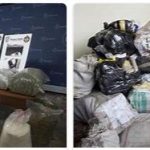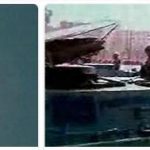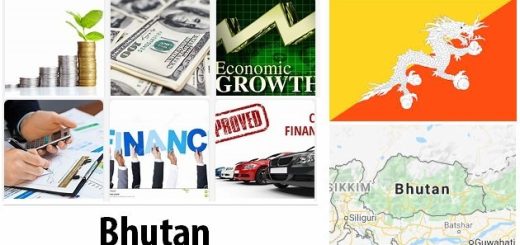The Global Yoke of Drugs Part I
More people suffer a violent death outside the world’s war zones than in them. Tens of thousands are killed annually – directly or indirectly – as a result of criminals’ violence and other criminal acts. Even more have their lives ruined or significantly reduced. In organized strategies worldwide, international organized crime is seen as one of the greatest threats to human security.
That threat has many faces; it is responsible for a number of illegal activities – human trafficking , arms smuggling, money laundering of illegal income and not least drug production and trafficking with a lot of violence and abuse as part of its nature. Compared to the media attention that wars and serious conflicts receive, it is strangely quiet about the deadly and criminal violence.
- What is the connection between war and crime?
- How can criminal violence affect the work for peace?
- To what extent is the problem?
- What is the international community doing? And what are the options?
2: Background
In many of the world’s conflict areas, war, violence and crime go hand in hand. Several of the war actors have strong ties to criminal groups – whether they are not criminals themselves, or will be during a conflict. War and serious conflict can be a cover for criminals and their shady activities – whether it is the production and smuggling of drugs, natural resources such as diamonds or the illegal trade in people or weapons.
The scarcity of goods that often occurs during wars also creates fertile ground for the smuggling of almost all types of goods. Many actors thus have a greater interest in war than in peace – at least as long as they themselves as war barons escape the horrors of war. And if conflict areas are not themselves the scene of drug production, they often serve as central bridgeheads in smuggling to users.
Drug production and trafficking – lucrative as it is – is a core business for many criminal organizations. In this article, we will therefore concentrate in particular on the drug industry and how it affects people’s lives and safety.
One hundred years after the Shanghai Commission in 1909 initiated international cooperation against drug production, trafficking and abuse, new, global and criminal mafia organizations have apparently gained an economic and resource advantage in several countries and regions. The drug industry uses as much resources to deceive, circumvent and overtake the police and customs as the authorities use to counteract evil.
According to US police authorities, Mexican and Colombian drug cartels alone trade and launder for between 130 and 280 billion kroner a year. The entire global drug industry sells values that are probably the size of the world’s oil and gas industry and twice as large as the car industry – even before the car industry was hit by the economic crisis.
3: Drugs spread death and misery
Globally, 112 million people abuse drugs every month. Of these, 26 million are heavily drug addicts . Every year, about 200,000 die as victims of the abuse. In a larger circle outside the ranks of addicts, we have all those who in one way or another are desperate and fearful witnesses to the abuse – conditions that can hardly be measured in numbers, but which are still there. At the same time, hundreds of millions suffer from crossfire, crime and corruption that follow the drugs on the way from the farmer in Afghanistan and Colombia, to the party in Oslo west or the injection room in Oslo east. In other words, violence does not stop at social boundaries.
One of the smuggling routes (cocaine) goes from Colombia by boat to the illegal Guinea Bissau in West Africa, then by car through the Sahara to the Middle East, Eastern Europe and Norway. In all these countries, violence and death follow the path of drugs. Another route starts in Afghanistan (heroin) and the surrounding countries and ends up in Western Europe, including Norway. Along the way, the authorities manage to make some seizures, but probably only of smaller parts. The largest seizures of opium-based drugs such as heroin are made in Iran and Turkey. This also indicates which way the drug smuggling is taking.
If we die in the battle for the drug billions , Mexico has in recent years been the scene of one of the world’s three biggest wars. In 2008, more than 5,000 people were killed in Mexico in drug-related violence, and over a thousand were killed during the first eight weeks of 2009. The gang clashes in Colombia and Mexico kill as many as the Israeli-Palestinian conflict and the wars in Lebanon and Afghanistan and the 9/11 terror combined. In the Mexican city of Juarez alone, 1,600 people were killed in 2008 as a result of the dispute between the local drug cartel and the national Sinaloa cartel. The police car convoy of the governor of Chihuahua province on the border with the United States was attacked by a well-organized group of men with machine guns. At the same time, the police chief in Juarez was forced to resign because the drug cartels had started killing a police officer every 48 hours to force his resignation.
In fact, according to THEMAKEUPEXPLORER, some have begun to refer to Mexico as something close to a failed state – a state in collapse. And in the United States, fears are spreading that drug violence in Mexico will spread even more than it has already done.
4: Drugs – fuel for war
At the same time as criminal violence is exploding in countries without formal war, the drug industry is one of the most important sources of continued war – for wars to drag on – in which peace brokers have given up. In 2003, officials in Afghanistan warned that the opium poppies were grown over a record area of 80,000 hectares. In 2007, when the war intensified, the size of opium fields increased to 200,000 hectares (estimated), corresponding to more than 90 percent of the world’s opium and heroin production. Since then, production has declined somewhat in 2008 and so far in 2009.
One of the reasons why opium fields are getting a little smaller in Afghanistan is that the explosive growth in recent years has crowded smuggling routes and reduced the price of all links from the conflict areas in Afghanistan to the streets in Norway or other “consumer countries”. The increase in production in recent years nevertheless gives cause for concern when we know that there is a connection between the size of production and consumption.
The warlords can continue with their purchases of illegal weapons and their local wars because they get money from consumers in Norway and other rich countries. The FARC guerrillas in Colombia were founded in the 1960s as a Marxist self-defense group. Other Latin American guerrillas have been shut down since the end of the Cold War, but the FARC still has tens of millions of dollars in drug revenue. Production, smuggling and trafficking of cocaine took over when the ideological fuel ceased. The brutal semi-military groups are even more drug-funded.
The result is that the war in Colombia has now been raging for 45 years. It has displaced millions of poor people, wreaked havoc on the environment and is exterminating a dozen Native American tribes. For every hectare of coca bushes, several hectares of rainforest must be cut down. Hundreds of tons of chemicals for processing cocaine go straight into the rainforest ecosystems. Colombia has therefore had as great a loss of biological diversity as the much larger Brazil.













